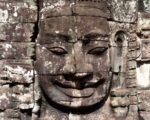Colorado was the first state in the US to legalize recreational marijuana in 2012, and since then, the cannabis industry has grown exponentially. From sales and tax revenues to social justice and public health, the impact of legal weed has been felt across various sectors and communities. Here are some of the key changes and challenges that have shaped Colorado’s cannabis landscape in the past 10 years.
Cannabis Sales and Tax Revenues Reach New Heights
One of the most visible benefits of legalizing recreational marijuana has been the increase in sales and tax revenues. According to the Colorado Department of Revenue, cannabis sales have surpassed $11 billion since 2014, generating more than $1.8 billion in taxes and fees. These funds have been allocated to various programs and initiatives, such as public education, substance abuse prevention, mental health services, affordable housing, and environmental protection.
The cannabis industry has also created thousands of jobs and stimulated economic activity in the state. According to a report by the Marijuana Policy Group, the cannabis sector supported over 41,000 full-time jobs and contributed $2.4 billion to the state’s GDP in 2020. The report also estimated that for every dollar spent on cannabis, $2.40 is generated in economic output.
Social Justice and Equity Remain a Work in Progress
Another major goal of legalizing recreational marijuana was to address the social and racial injustices caused by the war on drugs. According to the American Civil Liberties Union, marijuana arrests in Colorado decreased by 52% from 2012 to 2018, and racial disparities in arrests also declined. However, Black and Latino people still face disproportionate rates of arrest and prosecution for cannabis-related offenses, especially in some counties and cities.

To remedy this situation, Colorado has taken steps to expunge and seal past marijuana convictions, as well as to promote social equity and diversity in the cannabis industry. In 2017, Governor John Hickenlooper signed a bill that allowed people to petition for the sealing of their records for low-level marijuana offenses. In 2020, Governor Jared Polis signed an executive order that granted clemency to nearly 3,000 people convicted of possessing one ounce or less of marijuana. In 2021, Polis signed a bill that created a statewide social equity program for cannabis entrepreneurs, which provides grants, loans, technical assistance, and mentoring to eligible applicants.
Public Health and Safety Face New Challenges and Opportunities
Legalizing recreational marijuana also raised concerns about the potential impacts on public health and safety. Some of the issues that have emerged include youth access and use, impaired driving, accidental ingestion, and product testing and labeling. According to the Colorado Department of Public Health and Environment, the rate of past-month marijuana use among high school students in Colorado has remained stable since 2012, and is similar to the national average. However, the rate of marijuana-related hospitalizations and emergency department visits has increased, especially among tourists and children.
To address these issues, Colorado has implemented various policies and programs, such as setting age and purchase limits, regulating packaging and potency, requiring child-resistant containers, imposing taxes and fees, enforcing DUI laws, and launching public education and awareness campaigns. The state has also invested in research and data collection to monitor and evaluate the health effects of cannabis use and exposure.
The Future of Cannabis in Colorado
As Colorado marks 10 years of legal recreational marijuana, the cannabis industry faces new opportunities and challenges. Some of the emerging trends and issues include:
- The rise of new products and consumption methods, such as edibles, concentrates, vapes, and topicals, which offer more variety and discretion to consumers, but also pose higher risks of overconsumption and contamination.
- The expansion of the medical marijuana program, which now serves over 85,000 patients with various qualifying conditions, and offers lower taxes and higher purchase limits than recreational marijuana.
- The competition and collaboration with other states that have legalized recreational marijuana, such as California, Illinois, and New York, which may affect the market size and dynamics, as well as the interstate commerce and cooperation.
- The uncertainty and inconsistency of the federal law, which still classifies marijuana as a Schedule I substance, and prohibits its cultivation, distribution, and possession, creating legal and financial barriers and risks for the cannabis industry and consumers.
Despite these challenges, Colorado’s cannabis industry shows no signs of slowing down, and continues to innovate and adapt to the changing needs and preferences of the consumers and the society. As one of the pioneers and leaders of the cannabis legalization movement, Colorado has set an example and a standard for other states and countries to follow and learn from.














